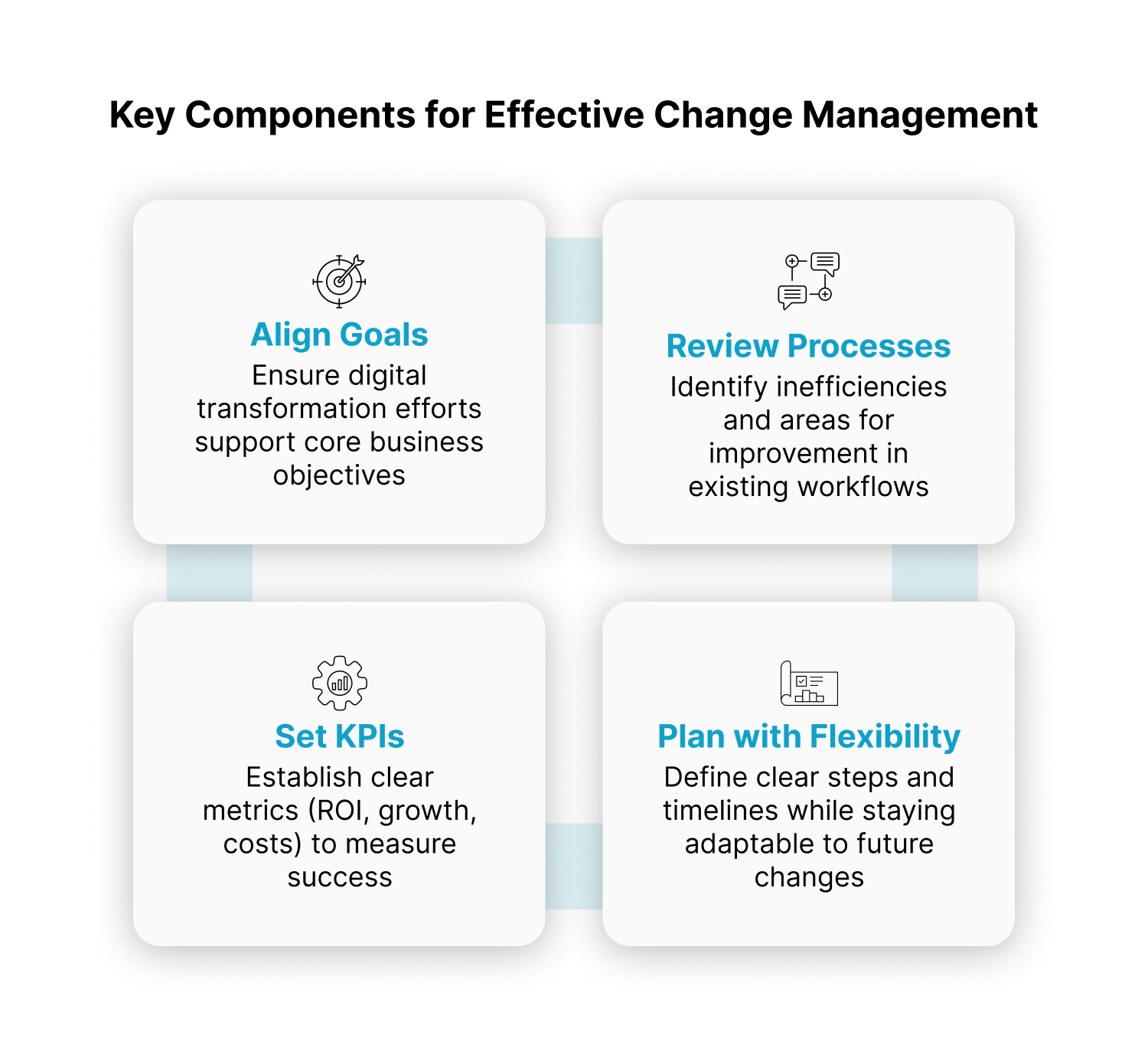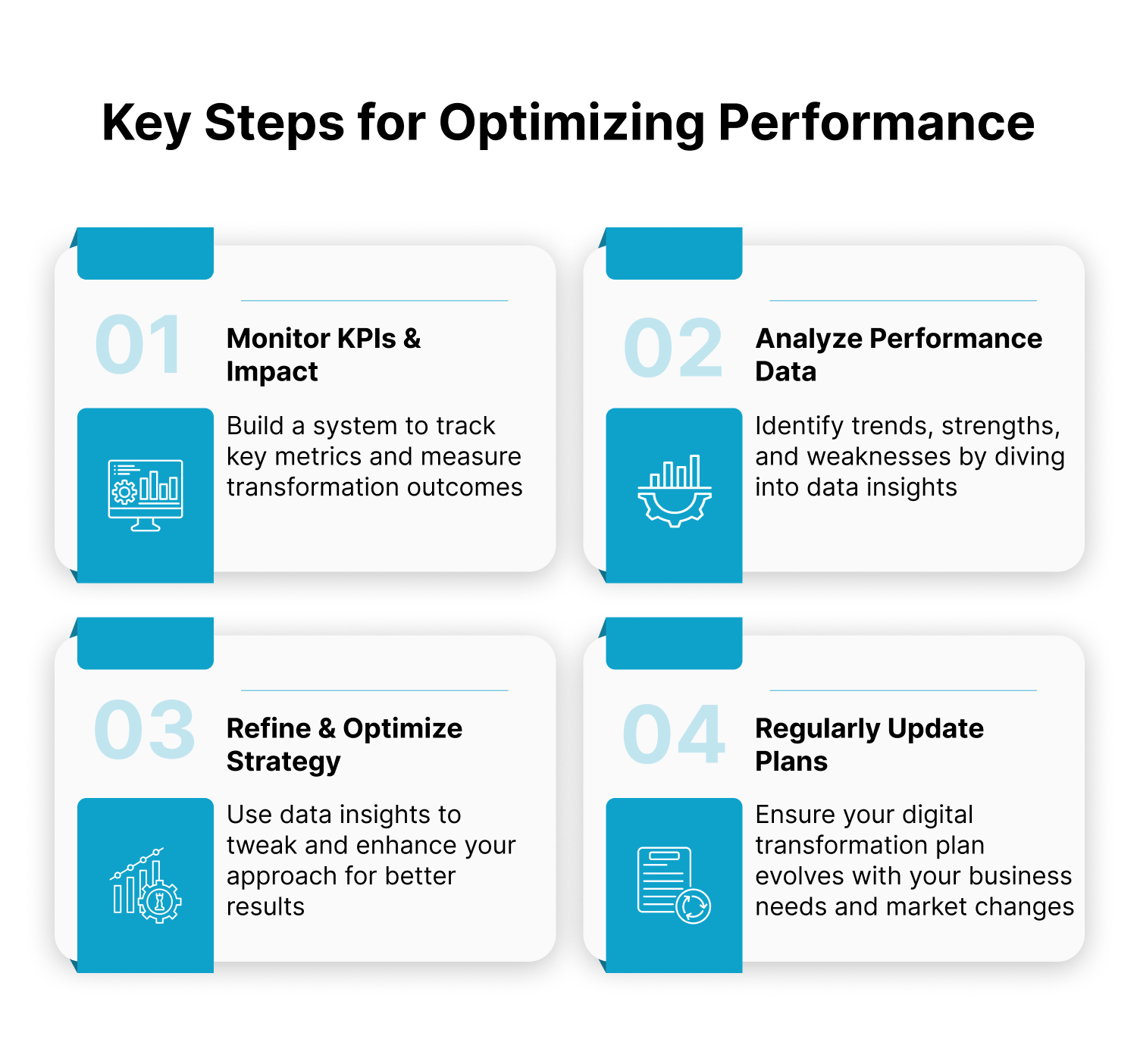Digital Transformation Roadmap: A 6-Step Plan for Enterprises
You snooze, you lose—and in today’s digital world, and in today’s digital world, that proverb could not be truer. The digital environment is changing so quickly that companies who do not adopt change will have trouble keeping up. In fact, a study conducted by MIT found that companies with high levels of digital maturity earn 26% more profits than their most immediate competitors in their industry. This research displays just how transformational digital change can be, and how it provides an obvious competitive edge if you choose to change.
Digital transformation is a complex process and can be daunting to implement. Many enterprises struggle with fragmented initiatives, misaligned strategies, and resistance to change. This makes it necessary to have a well-defined plan which provides a clear structure and direction that reduces the risks associated with haphazard implementation.
The plan provides a clear view of the alignment between business goals and technological advancements, facilitates efficient resource allocation, manages change effectively, and allows you to measure and track the progress made.
Step 1- Define a Clear Digital Transformation Strategy
First, align your digital transformation goals with your overall business objectives. To do so, answer these questions – What problems are you trying to solve? What opportunities are you trying to seize? Meanwhile, conduct a thorough assessment of your current processes and identify the areas that can be improved.
Next, define clear Key Performance Indicators (KPIs) to measure the success of the transformation. Some examples of the KPIs are return on investment, revenue growth, and customer acquisition cost.
Lastly, your strategy development plan should be clear enough to explain your vision and outline the steps, timelines, and resources required to achieve your goal. Remember, your strategy must be adaptable to future changes so be open to a culture of innovation and experimentation.
Step 2- Evaluate and Select the Right Technology Stack
Tech stack evaluation can help you get rid of tools that lead to costly inefficiencies and integration problems, and hinder your ability to scale. Start by assessing your current technology infrastructure and identifying the gaps and bottlenecks. Research and evaluate potential technologies such as cloud computing, AI, IoT, and automation, that can address these issues.
Prioritizing technologies that align with your defined strategy and business needs will ensure that your efforts are purposeful and effective. Some of the factors you can consider are scalability, security, and integration capabilities. Once you have selected the technologies, focus on the interoperability between systems to ensure that data flows seamlessly.
Step 3- Implement Effective Change Management
Digital transformation is as much about people as it is about technology, which means you need to recognize the human element and develop a comprehensive change management plan. Communicate the vision and benefits of the transformation to all stakeholders, from top management to frontline employees, so they understand their role and impact on the organization.
To further help employees adapt to new technologies and processes, provide them with thorough training and support. Address any potential resistance to changes being introduced by creating a culture of open communication and collaboration. Also create feedback loops to encourage their participation and address their concerns.
After all, active and visible support of top-level executives is essential for the success of any significant organizational transformation, particularly digital transformation. This is shown in McKinsey’s research, where respondents were up to 3 times more likely to report successful digital transformations when key factors were in place. (Respondents were individuals involved in or responsible for digital transformation initiatives within their organizations.)

Step 4- Execute the Implementation Plan
Adopting a phased approach to implementation can minimize disruption. This could include breaking down large projects into smaller, manageable stages and allowing employees to gradually adapt to the changes. Establishing clear project milestones and timelines will provide structure and accountability, keeping the project on track. Also, building cross-functional teams ensures alignment and collaboration across departments.
On the technological front, utilizing agile methodologies increases flexibility and responsiveness that allows you to make quick adjustments depending on the market conditions. Ensuring seamless integration of new technologies with existing systems will improve the operational efficiency.
As no project is truly ever free of issues, conduct thorough testing and validation to identify and resolve them promptly. A frequently seen issue across industries involves data security and privacy, so make sure to prioritize them throughout the implementation process.
Step 5- Monitor and Optimize Performance
Performance tracking provides the data-driven insights necessary to refine strategies and optimize outcomes. To ensure continuous improvement in your digital transformation efforts, establish a robust system for monitoring KPIs and measuring the impact of the transformation.
“Data-driven companies are 23 times more likely to top their competitors in customer acquisition, about 19 times more likely to stay profitable and nearly seven times more likely to retain customers,” reported Forbes. Therefore, analyze data to identify areas for optimization, understand what’s working and what’s not, and refine your strategy accordingly. Also, review and update your digital transformation plan regularly based on the performance data and your evolving business needs.

Step 6- Create a Culture of Innovation and Agility
A culture that embraces change and encourages constant improvement promotes adaptability, innovation, and resilience, allowing organizations to navigate disruptions, seize opportunities, and maintain a competitive edge. Organizations that create this culture ensure their employees are empowered to learn and evolve and drive long-term scalability and agility.
Therefore, cultivate a mindset of continuous improvement and adaptation, where change is embraced rather than resisted. Encourage experimentation and risk-taking as part of your organization’s culture, while creating a safe space for innovation. Promote collaboration and knowledge sharing across departments to leverage collective knowledge and skills to address challenges.
Develop agile teams that can respond quickly to changing market conditions. A study by MIT Sloan stated that “agile firms grow revenue 37% faster and generate 30% higher profits” than their more traditionally-run counterparts.
Conclusion
Following this 6-step roadmap will enable enterprises to navigate the complexities of digital transformation successfully. The future belongs to those who embrace change and adapt to the digital age. Begin your digital transformation journey today and unlock your enterprise’s full potential.







